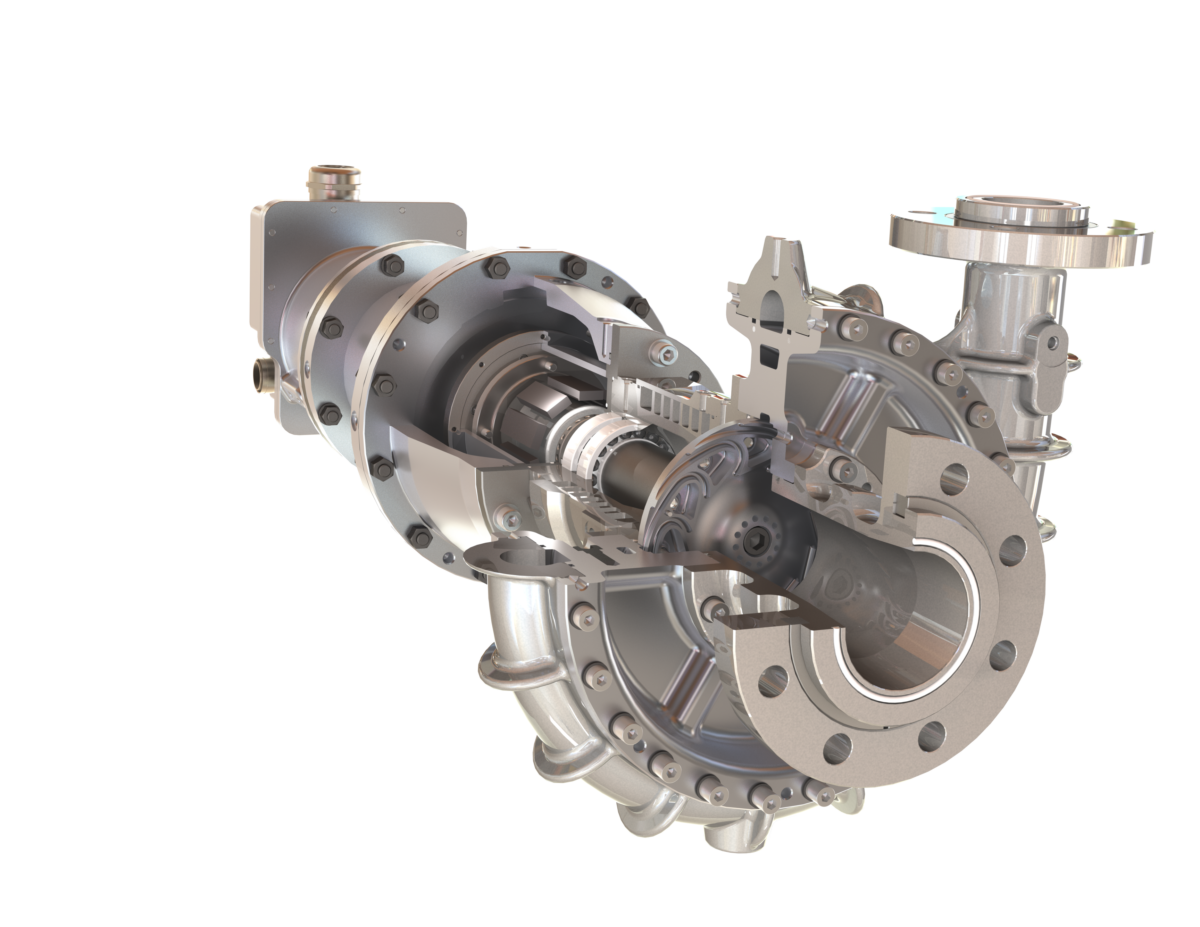UK-based startup FutraHeat is developing a high-temperature heat pump that uses waste heat from industrial processes to generate steam. The heat pump is electrically powered and can operate with zero CO2 emissions when powered by electricity from renewable sources.
“The heat pump utilizes waste heat from all sorts of industrial processes, including drying, distillation, and brewing, among others,” FutraHeat's CEO and founder, Tom Taylor, told pv magazine. “We can also take heat recovered from the ground, water, or air by a lower temperature heat pump and increase this to more practical temperatures.”
The core of the heat pump is FutraHeat's TurboClaw compressor, which the manufacturer describes as a cost-effective, zero-carbon solution to industrial process heating. “TurboClaw isn’t itself a steam compressor, although we have built such a machine and plan to commercialize this too in the future, but uses Honeywell’s Solstice R1233zd, ultra-low-global-warming-potential (LGWP) refrigerant in a closed loop system, which then generates steam via a heat exchanger,” Taylor explained. “The compressor itself is driven by an electric motor which directly spins TurboClaw up to a modest 20,000 rpm, ‘concentrating’ low-grade recovered heat up to higher, useful temperatures.”
US conglomerate Honeywell developed its refrigerant as a replacement for R-123, which has been phased out in several countries because of environmental concerns. “Honeywell’s Solstice Solstice R1233zd has a global warming potential of 1 and can operate up to temperatures in excess of 150 C,” Taylor said. “Its properties, such as density, make it a particularly good match for TurboClaw.” The refrigerant is based on hydrofluoro-olefin technology and, according to the manufacturer, offers similar efficiency to R-123 in low-pressure centrifugal chillers to cool large buildings and infrastructure.
The two companies claim the heat pump can operate at reduced speeds without oil, which lowers manufacturing, operating and heating costs. It can reportedly recover waste heat from as low as 70 C, and deliver high-grade heat up to 150 C. “Because of the advantages of TurboClaw we estimate that we can produce our heat pumps more cost effectively than others and deliver a quick return on investment in our target applications,” Taylor said, noting that payback time is estimated between two and three years.
Futraheat recently received a GBP 500,000 ($607,821) grant from Innovate UK to build a 300 kW TurboClaw demonstrator. “We expect it to be available for demonstration in September,” Taylor said.
This content is protected by copyright and may not be reused. If you want to cooperate with us and would like to reuse some of our content, please contact: editors@pv-magazine.com.




it’s very good